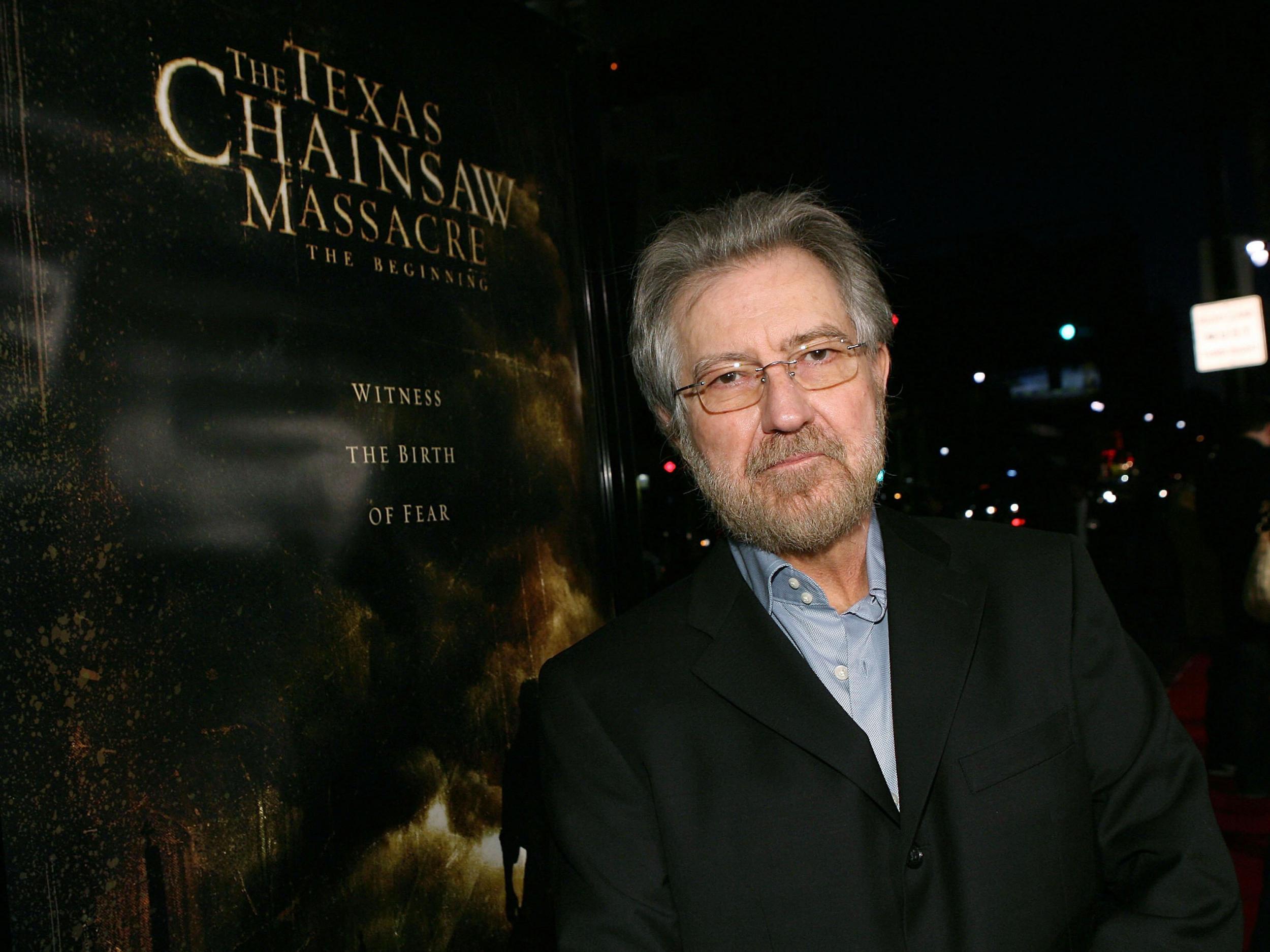Tobe Hooper, master of horror
The director redefined the genre with 1974’s ‘The Texas Chain Saw Massacre’, made supernatural chiller ‘Poltergeist’, and adapted Stephen King in the mini-series ‘Salem’s Lot’

Tobe Hooper, a 29-year-old Texan and film-school dropout, had wanted to make a work of art – a cinematic masterpiece in the mould of his Italian idols, directors Federico Fellini and Michelangelo Antonioni. Walking through a bustling department store days before Christmas in 1972, he found inspiration for a grislier kind of movie in a display of gleaming chain saws.
“I thought, ‘I know a way I could get through this crowd really quickly,’ ” he told US magazine Texas Monthly in 2004. “I went home, sat down, all the channels just tuned in, the zeitgeist blew through, and the whole damn story came to me in what seemed like about 30 seconds.” The resulting film – The Texas Chain Saw Massacre (1974) – was a low-budget, blood-soaked horrorfest made with college students, teachers, a menagerie of dead animals and two human skeletons, one of them real.
Most critics were disgusted, with one Harper’s magazine reviewer calling it “a vile little piece of sick crap.” But its reputation has improved ever since, winning praise as one of the greatest horror films of all time, credited with popularising the slasher genre in the 1970s.
Hooper (his first name is pronounced Toby), who has died aged 74, went on to direct the Steven Spielberg-produced Poltergeist in 1982. In addition, he directed nearly 20 films, numerous TV episodes and the zombie-populated music video for the Billy Idol song “Dancing With Myself”. But he remains best known for The Texas Chain Saw Massacre, which he produced, directed and co-wrote.
He described it as an updated version of the Hansel and Gretel story and likened its villain, a 300-pound butcher known as Leatherface, to the 1950s cartoon duck Baby Huey. (Both characters were stuck in childhood, he said.) But while Hooper’s story retained the cannibalistic element of the Brothers Grimm fable, it was far more sinister, replacing a pair of sweet-toothed children with a group of five young hippies, and swapping the witch’s oven for a butcher’s hook and a sharp-toothed power tool.
Hooper and his co-writer, Kim Henkel, based their story in part on Ed Gein, a Wisconsin serial killer who made masks out of his victims’ faces. But they filled in their own gruesome details for a plot that pit Leatherface, played by Gunnar Hansen, against a blonde-haired heroine played by Marilyn Burns.
The movie was “as violent and gruesome and blood-soaked as the title promises,” Roger Ebert wrote in a two-star review. “It’s also without any apparent purpose, unless the creation of disgust and fright is a purpose. And yet in its own way, the movie is some kind of weird, off-the-wall achievement.” Despite being banned in many countries, it went on to gross more than $30m and became a mainstay at drive-in theatres and a favourite of horror directors. The movie, John Carpenter once said, “pacified my soul.”
Willard Tobe Hooper was born in Austin, on 25 January 1943. His mother reportedly went into labour while at a cinema, and his father was a film buff who owned a hotel. His parents divorced when he was young, and his father died when he was a teenager.
Hooper began shooting movies at three, using his father’s 8mm camera, and studied film at the University of Texas before dropping out after two years. For his first major work, he shot and directed a public-television documentary of the folk group Peter, Paul and Mary. He followed that with a more drug-infused film about the 1960s counterculture, Eggshells, before turning to horror. “I thought, ‘The only way to get the kind of attention I wanted was through genre film, horror genre film,’ ” he told the Montreal Gazette in 2014. “I didn’t need stars. All I needed for it to work was to scare people.”
Hooper directed Salem’s Lot, a 1979 CBS mini-series based on a vampire novel by Stephen King, before making Poltergeist, a hit about a family that moves into a haunted house where demons emerge from a TV set. The movie was nominated for three Academy Awards, but credit for its success was given by many critics not to Hooper, but to Spielberg, who co-wrote the movie and was credited with developing its story and picking its cast.
Hooper directed a 1986 sequel to The Texas Chain Saw Massacre, with Dennis Hopper as a retired, revenge-seeking Texas Ranger, although the film proved less successful than its predecessor. A half-dozen sequels followed from different directors, while Hooper worked on horror films that included Invaders From Mars (1986), a remake of William Cameron Menzies’s science-fiction classic, and The Mangler (1995), which adapted a King story about a murderous ironing machine.
Hooper insisted that The Texas Chain Saw Massacre was not nearly as bloody as many critics said it was, pointing out that many of his quick cuts were designed to hide the movie’s most violent moments. He told Texas Monthly that he frequently consulted the Motion Picture Association of America, Hollywood’s rating agency, in an effort to ensure a PG rating.
“ ‘I have this scene where a girl gets hung on a meat hook.’ Long silence. ‘What could I do?’ Long silence. ‘I guess it would help me if there was no penetration shot.’ ‘That would be correct.’ ‘And no blood?’ ‘That would help.’ ”
Hooper decided to keep the blood, and his movie was given a restricted (R) rating.
Willard Tobe Hooper, director: born 25 January 1943; died 26 August 2017
© Washington Post
Subscribe to Independent Premium to bookmark this article
Want to bookmark your favourite articles and stories to read or reference later? Start your Independent Premium subscription today.

Join our commenting forum
Join thought-provoking conversations, follow other Independent readers and see their replies